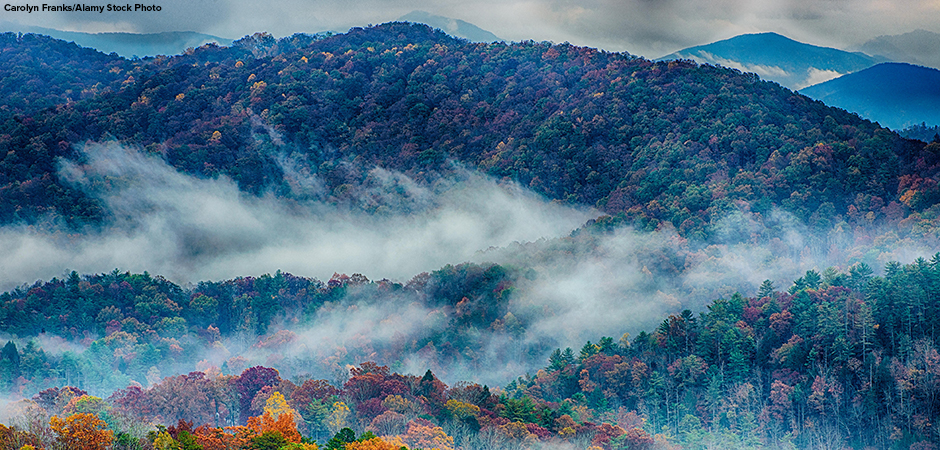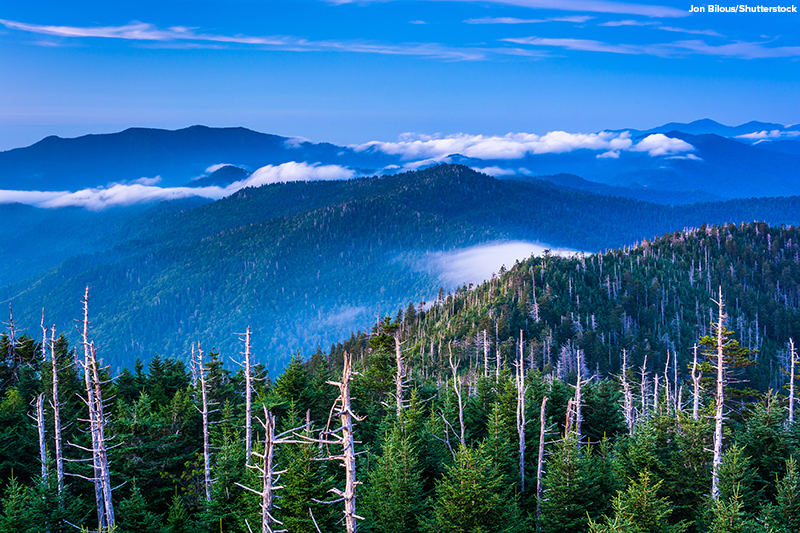
Each year, millions of American and international tourists visit the over 400 National Park Service sites around the United States. The most popular park is Great Smoky Mountains National Park, located on the border of Tennessee and North Carolina. (Other popular national parks include Grand Canyon National Park in Arizona; Zion National Park in Utah; and Yellowstone National Park in Wyoming.) Clingman’s Dome is the highest peak in Great Smoky Mountains National Park, and it is an important landmark on the Appalachian Trail. Clingman’s Dome is not the peak’s original name. Now, as part of a new initiative, the National Park Service is returning the popular tourist spot to its original name.

Renaming History
Throughout ancient history, the indigenous people who lived in what is now the United States used their own place names, many of which were not written down. When European explorers began to arrive, they kept or modified some of these names. The Europeans also changed some places to Western names. This was especially true for the national parks, many of which were sacred spaces for indigenous people.
Native American groups have long fought to change the names of these national park sites back to their original names, with varying degrees of success. In recent decades, however, several name changes were made in places named after people who played problematic roles in history, such as committing war crimes or genocide. In 1980, Mount McKinley National Park was changed to Denali National Park. In 1991, Custer Battlefield National Monument was changed to Little Bighorn Battlefield National Monument. More recently, Harney Peak in South Dakota was renamed Black Elk Peak.
Some people disagree that the names of these well-known places should be changed. They worry that changing their names would be too complicated or cause confusion for tourists. But for many Native American groups, it is very important to recognize and honor the original names of sacred places. Indigenous people and their allies believe that these names are not being changed; rather, they are being restored.
What’s In a Name?
The highest peak in Great Smoky National Park–formerly known as Clingman’s Dome–receives more than 65,000 visitors per year. Originally, the Cherokee called the peak Kuwohi, meaning “mulberry place.” It is a sacred place for the Cherokee, as it is the highest point within the traditional Cherokee homeland. Even today, the peak is closed three times per year so that children from predominantly Cherokee schools can visit and learn about it from Cherokee elders and community members.
However, in 1859, the peak was re-named for Thomas Lanier Clingman. Clingman was a North Carolina lawyer and member of Congress from North Carolina. He was also a Confederate general. In January 2024, the Eastern Band of Cherokee Indians submitted an official name change request to the U.S. Board of Geographic Names to return Kuwohi back to its original name. The National Park Service strongly supported the request, and so did local communities and governments. Now that the Board has approved the request to restore the original name, the peak will now be known as Kuwohi. The National Park Service has already begun efforts to update signage, its website, and other materials to reflect the restored name.
